Salcombe Art Club Exhibition preview: Hope Cove Fishing Gear
Hope Cove Fishing Gear – the featured painting above – is one of five I plan to submit for consideration of the Hanging Committee of Salcombe Art Club, hoping they will be accepted for the 2017 Salcombe Art Club Exhibition which opens on Thursday 13 April.
On this blog, I’ll post a preview of each of the five paintings, over the next few weeks. If you decide you want to purchase one of them, be quick. The prices go up in April!
What inspired me to paint Hope Cove Fishing Gear?
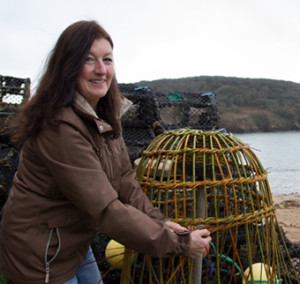 I support the Hope Cove Lifeboat. Year after year, Anne and I have a stall, selling my fine art greetings cards, at the Fund Raising Day in August at the Cottage Hotel. It’s a great event, attracting locals and visitors and much money is raised for this worthy cause.
I support the Hope Cove Lifeboat. Year after year, Anne and I have a stall, selling my fine art greetings cards, at the Fund Raising Day in August at the Cottage Hotel. It’s a great event, attracting locals and visitors and much money is raised for this worthy cause.
We have a regular position at the far end of the Cottage Hotel’s dining room and, beside us, Sue Morgan (photo) demonstrates how to weave the traditional crab pots.
Year after year, the question would come up: Do you have any cards of Hope Cove?
I painted Hope Cove Fishing Gear, inspired by Sue’s skills, and to try to meet the demand of the folk who buy my cards.
To be honest, it wasn’t a huge hit with the locals!
And then?
And then, a year later, I tackled the second study of Hope Cove, of the beach – with both modern and traditional crab pots being featured in the foreground – again inspried by Sue Morgan.
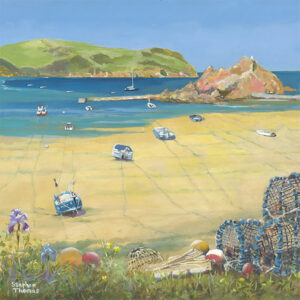
This one was more successful! The image was so popoular, it was used for the poster for the 2016 Fund Raising Day, and also for the Treasure Hunt.
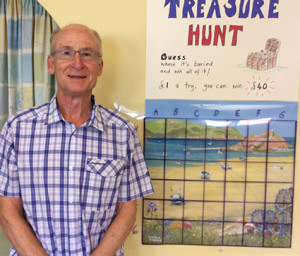
Affordabale art
Both images are available as a fine art greetings card. The range is now 59 strong, and on sale at Malborough Post Office.
Just think: for less than 1% of the sales price of an original painting, you can invest in a fine art greetings card. Send it to a friend or frame it for yourself. Whistlefish sell frames that fit … about £10 each.


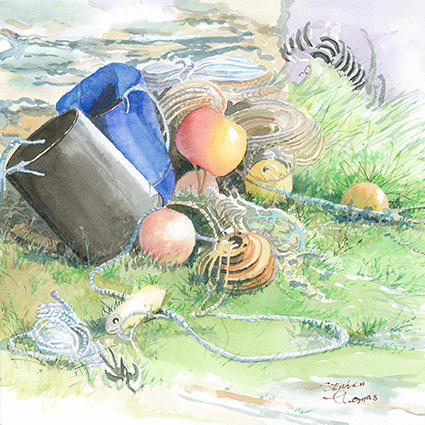
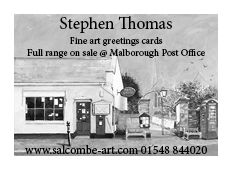
 It’s that time of year – firming up the 2017 exhibition schedule.
It’s that time of year – firming up the 2017 exhibition schedule. As a member of Salcombe Art Club, I’ve exhibited in the club’s Summer Exhibition for many years now.
As a member of Salcombe Art Club, I’ve exhibited in the club’s Summer Exhibition for many years now.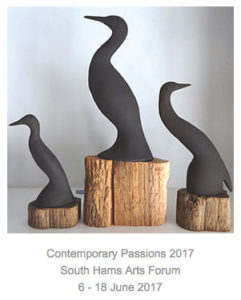
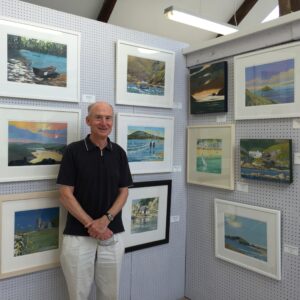 Salcombe Art Club invite members, including associate members, to take one or two weeks in the Little Studio, to display as many of their paintings as they can hang in the space.
Salcombe Art Club invite members, including associate members, to take one or two weeks in the Little Studio, to display as many of their paintings as they can hang in the space.
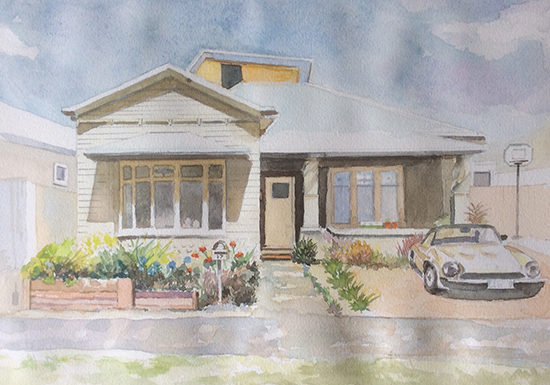
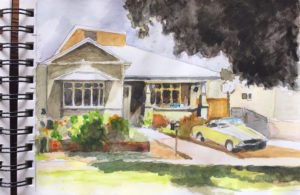
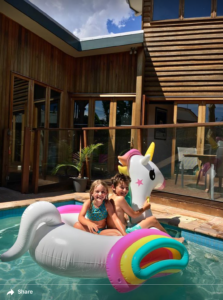
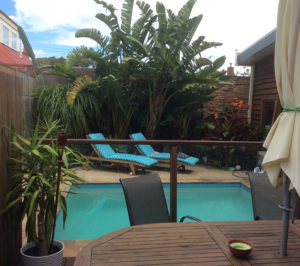
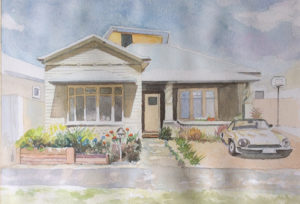
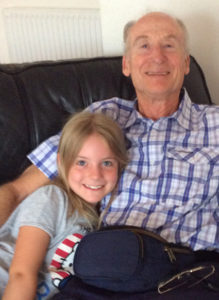 Notice the two figures in the window?
Notice the two figures in the window?